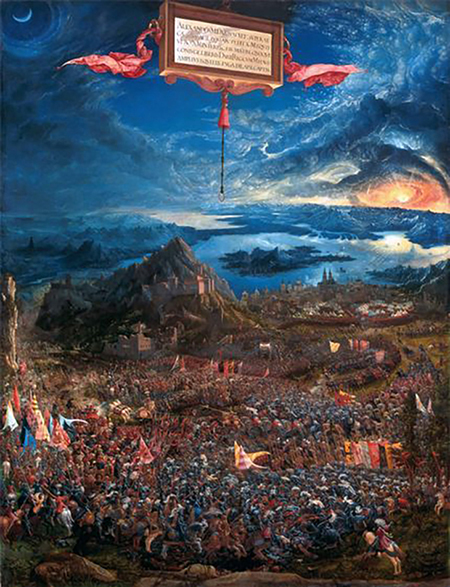
If you, like me, have been spending the last few months doing all you can to oppose our mad king and his suicidal minions while fighting off nagging doubts informed by 2016, mine are probably amped up by too much YouTube time with Epic History and The Fall of Civilizations. What if Trump, the real life version of Biff Tannen, endowed with federal superpowers, and aided by the bullet-headed thugs of his Republican Guard, wins re-election? What if we cannot find solutions for the pandemic, for economic decline, and for global climate catastrophe?
The end of the world (as we know it) is a trope of science fiction movies, and the post-apocalyptic era is a kind of survivalist fantasy world of Wild West anarchy with mighty-man warlords. It is actually the story of much of human history, once you remove the trappings of state and the regalia of royalty and religion. Shakespeare’s history plays bedeck royalist gangsterism in ineffable verse. Coppola’s ‘Godfather” trilogy depicts ruthless organized crime as business less the usual hypocrisy, and a corrupt pathway to quasi-legitimate power. Vito tells his son, now following in his footsteps: “I don't apologize — that's my life — but I thought that, that when it was your time, that you would be the one to hold the string. Senator Corleone; Governor Corleone.” All bow to President Corleone.
Western civilization represents, at least in name, an advance from the barbarism into which we seem to be backsliding. It is trendy these days to disparage Enlightenment liberalism as an ideological fig leaf for capitalism, colonialism and exploitation. It has been those things, but at its best represents, as it did for Lincoln, the last best hope for mankind. Can America gets its mind right, and live up to its stated ideals, or do we cede the planet, with supine realism, to nakedly authoritarian rival regimes?
We are currently in a great transition. The global digital economy is wreaking havoc on traditional norms, awakening dark forces — “dark shadows” in the words of our oracular maximum leader. A book from my freshman Western Civ class comes to mind: Norman Cohn’s “The Pursuit of the Millennium” examined how the social chaos wreaked upon feudal society by the incipient industrialization of Western Europe created the context for radical millennialist movements. Many believed the end of the world was imminent as they approached the year 1500. These groups rampaged across Europe, goaded by charismatic prophets, who assured them of inevitable success in establishing a true holy kingdom, no matter how many priests had to be beaten or beheaded. It’s a rollicking tale, nicely encapsulated in a few antinomian chapter headings: “The Saints Against the Hosts of Antichrist;” “An Elite of Self-Immolating Redeemers;” “An Elite of Amoral Supermen.”
Clearly we are in a similar moment of crisis. Perhaps Q, the supposed Deep Throat of QAnon, is familiar with the story’s conclusion, even if his warrior-citizens are not. Church and state put aside their usual bickering and united, the mailed fist within the velvet glove, to burn the heretics and suppress their impious, populist aspirations.
The Judaeo-Christian tradition’s eschatological concept of linear time, climaxing with the return of an angry/rewarding God, however loony in real life, paradoxically inspired great works of art. But do Bosch’s sublimely weird visions balance the suffering inflicted by the “christianizing and civilizing” (William McKinley) conquerors outfitted and enriched by the artist’s pious collectors? The Founding Fathers, heir to both Christian belief and Enlightenment rationalism, tried, brilliantly if imperfectly, to balance the better aspects of both, while turning a blind eye to their dark side: the slavery and genocide necessary to the myth of Manifest Destiny.
I wonder how much that supposedly necessary hypocrisy cost the leadership in psychic terms. The long history of fallen empires were often in their thoughts, and some of the painting of the era depicts those fears, while attempting to discharge or displace their energy into the safely remote past — object lessons for New World’s Best & Brightest. JMW Turner’s paintings of doomed civilizations, Hubert Robert’s paintings of ruins, and Piranesi’s paintings and etchings of imaginary prisons testify to a fascination with decline and decay. Some would now deem such visions simply morbid; others accept them as the inconvenient truths of philosophical realism.
David Foss Bjelajac’s wrote a memorable study of Washington Allston’s painting “Belshazzar’s Feast,” the biblical account of the hand of God delivering a fiery written warning to the Babylonians that their glorious empire would fall (as it did, in 539 BCE). Rembrandt had painted it earlier, dramatically, and the Romantic John Martin showed his contemporaneous version in England to great success. But for Allston, working decades after the American Revolution, it was a pictorial reminder that the new republic — the new Israel, not the new Rome — would have to be godly. He thus imbued the painting with a stentorian, moralistic feel. Allston, who worked on the painting from 1817 to 1843, was planning to work on the obstinate Babylonian king on the day he died. Maybe America’s royals can learn from the writing on the walls of Portland and Kenosha before our money-centered, death-dealing empire is given to the new Medes and Persians, whoever or whatever they turn out to be.
[Just to save you the time looking it up, “antinomian” is any view which rejects the rule of law and argues against moral, religious or social norms.—Ed]
